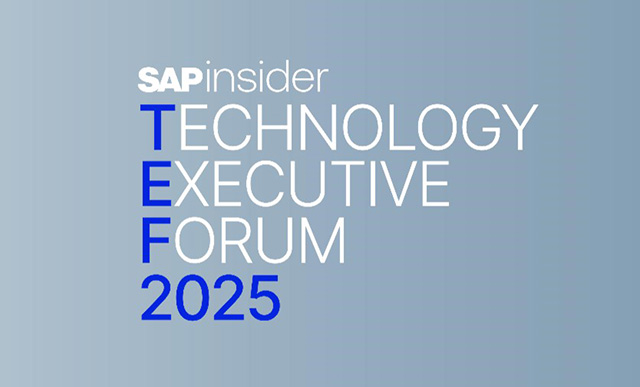SAP S/4HANA Implementation
Filter By
Browse By
- SAP Analytics and AI
- SAP Application Development and Integration
- All SAP Application Development and Integration
- SAP ABAP
- SAP ABAP Development Tools
- SAP ABAP Test Cockpit
- SAP API Management
- SAP BAPI
- SAP Basis
- SAP BRF
- SAP Business Application Studio
- SAP CMS
- SAP Design Studio
- SAP Development Tools
- SAP DevOps
- SAP EAI
- SAP EDI
- SAP Extension Suite
- SAP Fiori
- SAP Fiori Elements
- SAP Integration Suite
- SAP Low Code Application Development
- SAP Low Code Automation
- SAP Netweaver
- SAP Release Management
- SAP UI5
- SAP Web Application Server
- SAP Web IDE
- SAP Business Process Management
- SAP Center of Excellence
- SAP CIO
- SAP Customer Experience
- SAP Data and Data Management
- All SAP Data and Data Management
- SAP BW
- SAP BW/4HANA
- SAP Crystal Reports
- SAP Data Archiving
- SAP Data Center
- SAP Data Governance
- SAP Data Integration
- SAP Data Migration
- SAP Data Quality
- SAP Data Services
- SAP Data Strategy
- SAP Data Visualization
- SAP Data Warehouse Cloud
- SAP DMS
- SAP Document Control
- SAP EIM
- SAP ETL
- SAP ETL Tools
- SAP HANA
- SAP HANA Administration
- SAP HANA Deployment Infrastructure
- SAP HANA Studio
- SAP Master Data
- SAP Master Data Governance
- SAP MDM
- SAP Enterprise Architect
- SAP Enterprise Asset Management
- SAP ERP
- SAP Finance
- All SAP Finance
- SAP Accounting
- SAP AR AP
- SAP Asset Accounting
- SAP Billing Systems
- SAP BPC
- SAP BRIM
- SAP Cash Management
- SAP Central Finance
- SAP Controlling
- SAP COPA
- SAP Cost Center Accounting
- SAP Currency Risk
- SAP e-invoicing
- SAP FICO
- SAP Finance Automation
- SAP Advanced Financial Closing
- SAP Financial Consolidation
- SAP Financial Planning
- SAP FX Risk
- SAP General Ledger
- SAP Global Tax Management
- SAP Hyperion
- SAP Order to Cash
- SAP Payment Processing
- SAP Profitability Analysis
- SAP Rebate Management
- SAP S/4HANA Finance
- SAP SWIFT Compliance
- SAP Treasury Management
- SAP Universal Journal
- SAP Governance Risk and Compliance
- SAP Human Capital Management
- SAP Intelligent Technologies
- SAP Platform and Technology
- All SAP Platform and Technology
- SAP Business Technology Platform
- SAP Cloud
- SAP Cloud Connector
- SAP Cloud Integration Platform
- SAP Cloud Migration
- SAP Cloud Platform
- SAP Cloud Providers
- SAP Cloud Strategy
- SAP Digital Signature
- SAP Container Platform
- SAP HANA Enterprise Cloud
- SAP Digital Asset Management
- SAP Smart Forms
- SAP HEC
- SAP Digital Integration Hub
- SAP Hyperscalers
- SAP Infrastructure
- SAP Messaging
- SAP Quality and Testing
- SAP Security
- SAP Spend Management
- SAP Supply Chain Management
- All SAP Supply Chain Management
- SAP APO
- SAP Asset Management
- SAP Business Network
- SAP Digital Manufacturing Cloud
- SAP Digital Twin
- SAP EWM
- SAP IBP
- SAP Inventory Management
- SAP Label Printing
- SAP Logistics
- SAP Manufacturing
- SAP Manufacturing Automation
- SAP MES
- SAP MII
- SAP MM
- SAP MRO
- SAP MRP
- SAP Order Management
- SAP Plant Maintenance
- SAP PLM
- SAP Production Planning
- SAP S&OP
- SAP SD
- SAP SPM
- SAP Supply Chain Planning
- SAP Track and Trace
- SAP Transportation Management
- SAP System Administration
What is SAP S/4HANA Implementation?
SAP S/4HANA is the current enterprise ERP solution provided by SAP. SAP S/4HANA Implementation covers the deployment and configuration of the solution. Currently deployment methods include system conversion (sometimes called a brownfield deployment), new implementation (greenfield deployment), and selective data transition.
Steps to a successful SAP S/4HANA implementation include evaluating tools, SAP Readiness Check for SAP S/4HANA, SAP Fiori, SAP S/4HANA Migration Cockpit, data volume management, custom code conversion, landscape selection, infrastructure evaluation, security overview, and performance monitoring. It is also important to determine whether extensibility or customization will be used to make modifications to the solution to support organizational needs.
What is SAP S/4HANA Implementation?
SAP S/4HANA is the current enterprise ERP solution provided by SAP. SAP S/4HANA Implementation covers the deployment and configuration of the solution. Currently deployment methods include system conversion (sometimes called a brownfield deployment), new implementation (greenfield deployment), and selective data transition.
Steps to a successful SAP S/4HANA implementation include evaluating tools, SAP Readiness Check for SAP S/4HANA, SAP Fiori, SAP S/4HANA Migration Cockpit, data volume management, custom code conversion, landscape selection, infrastructure evaluation, security overview, and performance monitoring. It is also important to determine whether extensibility or customization will be used to make modifications to the solution to support organizational needs.
Key Considerations for SAPinsiders:
- How do you decide which of the different deployment models for SAP S/4HANA makes the most sense for your organization? SAP supports three different deployment models for SAP S/4HANA: a system conversion that takes the data and configuration from your existing SAP ECC system and moves them into SAP S/4HANA; a new implementation that brings no existing configuration information into the new system; and a selective data transition that brings configuration information from the existing system but allows data to be moved selectively into the new SAP S/4HANA implementation. This paneldiscusses the benefits of each of these approaches, so you can determine which is best for you.
- It’s important that you prepare your data for an SAP S/4HANA implementation. When moving to SAP S/4HANA, it’s important to understand your existing data landscape. Where is your data located? How much do you need to bring into SAP S/4HANA? How do you prepare your data for the move? How do you determine whether your data is actually clean? And how can you ensure that the move is successful. This event session walks you through the process of getting your data ready for an SAP S/4HANA implementation and provides best practices for making sure that the implementation goes smoothly.
- More than just doing the deployment, it is important to make sure that your organization has the right skills in place for your SAP S/4HANA implementation. What skills should you focus on as you prepare for the move to SAP S/4HANA? Are change management skills a necessity? What skills do you need to leverage SAP S/4HANA once it has been implemented? What are the best steps to prepare for the move to SAP S/4HANA? What does an organization need to do in the broader sense to prepare for an SAP S/4HANA implementation? This panel discussion covers these points to help you ensure that you are fully prepared for your next implementation.
222 results
-

Securing Your Migration to SAP S/4HANA
Reading time: 1 mins
Secure your S/4HANA transformation by managing user risks, migrating custom code, and securing cloud systems
-

Pre-Packaged SAP S/4HANA Deployment Solutions Provide Efficient, Cost-Effective Options
Reading time: 4 mins
Companies are pursuing rapid, cost-effective deployments of SAP S/4HANA to leverage its transformative potential and address the upcoming end of support for legacy systems, with pre-packaged solutions like Inetum’s Adopt2Win enabling go-live in as little as 12 weeks while emphasizing standardized processes and minimal customization.
-

Ergon Expands SAP Governance with Pathlock Cloud
Reading time: 2 mins
Ergon has upgraded its access management strategy by implementing Pathlock Cloud to ensure unified governance across SAP and non-SAP systems, addressing challenges arising from global expansion and the adoption of multiple cloud platforms.
-
-

Live from SAPinsider EMEA: An Interview with Karthik Seshasayee of Polestar
Reading time: 1 min
In a discussion with host Robert Holland, Karthik Seshasayee of Polestar shares insights on his journey with SAP, including the company’s transition to SAP S/4HANA Cloud Private Edition, the reasons for the move, deployment experiences, and recommendations for businesses starting their own SAP S/4HANA journeys.
-

Live from SAPinsider EMEA: An Interview with Eamonn O’Neill, CTO and Co-Founder of Lemongrass Consulting
Reading time: 1 min
In this podcast episode, Robert Holland interviews Eamonn O’Neill about the current SAP market, focusing on cloud transformation, SAP S/4HANA adoption, AI utilization, ROI from AI projects, and emerging opportunities for SAP customers.
-

Case Study: Swiss Federal Railways (SBB), SAFe and SAP S/4HANA
Reading time: 1 min
Learn how SBB implemented SAP S/4HANA with SAFe, scaling teams and using enterprise portfolio management. Discover strategies for smoother go-lives and successful integrations.
-

Accelerate SAP S/4HANA Success with SAFe Executive Guide
Reading time: 1 mins
The SAP S/4HANA deadline brings both financial risk and transformative potential. Many organizations struggle to deliver on time and realize ROI from their SAP programs. SAP Activate identifies SAFe® as a critical enabler for implementing SAP at scale with Agile ways of working. Learn how SAFe helps teams overcome common pitfalls, accelerate migration success, and…
-
-

A New Process Orchestration Approach to Safely Migrate to SAP S/4HANA
Reading time: 2 mins
As SAP ECC approaches its 2027 end-of-life, Camunda has introduced a new integration solution that enables gradual migration to SAP S/4HANA through process orchestration, allowing companies to maintain ECC connections via SAP BTP while minimizing risks and disruptions associated with traditional big bang migrations.
-

Don’t Just Migrate – Transform with SAP Cloud ERP
October 28, 2025
While most customers are aware of the upcoming end of mainstream maintenance for core SAP Business Suite solutions at the end of 2027, many are less familiar with the fact that those running versions of SAP ECC prior to EHP 6 that end of maintenance date is the end of 2025. While 2027 may still…
-

How Roche Refocused the World’s Largest SAP S/4HANA Project with SAFe®
October 22, 2025
SAP S/4HANA deployments can stall or fail because of complexity, competing priorities, or a lack of alignment between business and IT. This makes it vital for every organization to understand how they should approach an SAP S/4HANA project from the start to provide the best possible opportunity for success. This includes understanding why large SAP…
Become a Member
Unlimited access to thousands of resources for SAP-specific expertise that can only be found here.
Become a Partner
Access exclusive SAP insights, expert marketing strategies, and high-value services including research reports, webinars, and buyers' guides, all designed to boost your campaign ROI by up to 50% within the SAP ecosystem.
Upcoming Events
-

SAPinsider Technology Executive Forum
December 02 - 03, 2025
Phoenix, Arizona
United States
View Event
Related Vendors
Your request has been successfully sent

